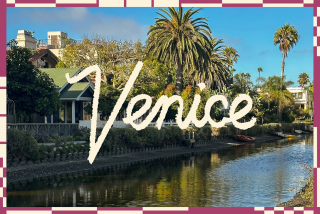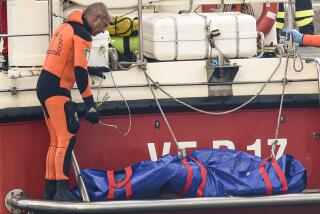Life returning to normal on Giglio Island after Costa Concordia

GIGLIO ISLAND, Italy — My ferry was full of school groups, delivery trucks and tourists when we left the Tuscan port of Santo Stefano and headed toward the island of Giglio, 12 miles away. I sat on deck with the other foreigners, enjoying the spring sunshine: It was too cold for the Italians, who huddled downstairs drinking espressos.
And then, Giglio’s white cliffs appeared in the distance and gradually grew closer.
Except that there are no white cliffs on this granite island. I was looking at the wreck of the Costa Concordia, which ran aground Jan. 13 just outside Giglio’s harbor.
As the ferry whipped past, my eyes were drawn to the great wreck, which lay on its side with a long, rusty gash in its hull. It name was inscribed on a white bow towering above the water. The ship was so close to the tiny harbor, massive and modern and incongruous.
Giglio is known around the world because of the Concordia, but I was hoping to see a Giglio that was not defined by the disaster in which 32 passengers and crew died. Thirty-five years ago, my husband, Mike, lived on Giglio for several months, shortly after its inhabitants gave up mining granite and pyrite and abandoned self-sufficient agriculture in favor of tourism. He remembers an unspoiled family vacation island, little known outside Italy, where affluent Romans (plus a handful of foreigners such as Los Angeles political power broker Stanley Sheinbaum) spent their summers in apartments or second homes.
My first stop was at Trudy Brandaglia’s real estate office overlooking the idyllic fishing port with its pastel pink and blue houses. Brandaglia had found Mike’s accommodations all those years ago and now she found me mine. After 48 years on Giglio, she knows seemingly everything and everyone. She gave me a map of the 8-square-mile rocky island with its three villages and numerous footpaths and hiking trails, but few roads.
Meanwhile, her husband, Gigi Brizzi, recounted the island’s history. Giglio’s harbor, called Giglio Porto, was much larger in Roman times, but today only traces are left: a few Roman walls incorporated into new buildings, a smattering of mosaics and the remains of a Roman eel farm sunk in the tiny inlet behind the 16th century Medici Tower that protects the harbor.
Like many Mediterranean islands, Giglio was shaped by pirate raids, which is why Castello, the main village 1,330 feet above sea level, is a walled fortress. In 1544, pirate Barbarossa captured all of the residents of Giglio and sold them into slavery. The ruling Medici sent 200 Tuscan families to repopulate the island. The Brizzis, Gigi’s family, were among them.
I hopped on the island’s blue bus up to Castello. We zigzagged under shady pines and cork trees, past grapevine-covered terraces, each with its own little round stone shed for storing tools. Outside the town gate, I was dwarfed by the high fortifications reinforced by boulders as big as houses. But inside Castello I found a charming maze of twisting alleys, stone steps, arches and tubs of flowers.
I started to walk along the well-marked trail to the island’s highest peak, Poggio della Pagana (1,634 feet), but had to turn back because I was meeting the island’s mayor, Sergio Ortelli. Since the Concordia disaster, Ortelli has gone from mayor of the 1,000 permanent residents (10,000 summer visitors) to become the voice of Giglio around the world. “We have to live with the boat this summer,” he said of the wreck. It will take 100 salvage experts months to make the Concordia safe to tow away. We stood quietly looking out his barred window at what he called “the sleeping elephant.”
Then Ortelli insisted I join him for a glass of Ansonaco, the local wine. The wine was dark gold and frothy — for a moment I thought it was beer — and tasted of sunshine. “It is very strong,” he said. “If you have two glasses you’ll be drunk.”
The family at the next table was upset because they’d left their camcorder on the bus. They need not have worried; the bus driver returned it to them on his next circuit around the island.
The same bus took me from Castello to Campese, a new development at the far end of the island. Once a pyrite mine, it’s now a complex of holiday apartments. The beaches around Giglio are granite sand with tiny sparkles of quartz, and the sea is emerald. The main beaches are divided into public and private zones, where concessionaires rent deck chairs and umbrellas and, in return, keep the entire beach clean. Numerous small coves are accessible only by boat — you can arrange to be dropped off and collected. According to Ortelli, all the oil has been safely removed from the Concordia, and there is no trace of pollution in the crystal-clear sea.
Back at the harbor and hungry, I decided to try an unostentatious osteria called La Paloma offering cucina spontanea. Although I was the only customer for this late lunch, owner Claudio Bossini offered to cook fish balls in artichoke sauce. They were delicious and followed by a sliver of panficato — Giglio’s specialty cake made of dried figs and chocolate. It tasted sweet without being sugary.
Giglio is no longer the way my husband remembers it, but the changes have been slow and incremental. It remains a quiet, upscale vacation place. Most of the accommodations are in apartments or villas; there are no hotels above a three star. It’s a spot to experience what Mediterranean summers are all about: days spent on the beach and evenings in little waterside trattorias eating freshly caught fish. There is not a lot to do at night — only one disco for teenagers and classical music concerts for adults — but that is part of Giglio’s charm.
When I walked out of La Paloma, an elderly woman, her white hair in a bun, was sitting in the sunshine on the dock, embroidering a tablecloth. The local old men were greeting their friends as they came off the ferry. Life was slowly returning to normal, if you could ignore the great white ship and the tents along the quay that house the salvage operation.
Sitting among the locals I found Sylvia Tervoort, the Dutch salvage master, and Paul Voisin, the senior salvage consultant. Both had been on Giglio for several weeks. Weren’t they eager to get home? Well, yes, they said, but they also couldn’t wait to return to Giglio for a holiday.
More to Read
Sign up for The Wild
We’ll help you find the best places to hike, bike and run, as well as the perfect silent spots for meditation and yoga.
You may occasionally receive promotional content from the Los Angeles Times.






